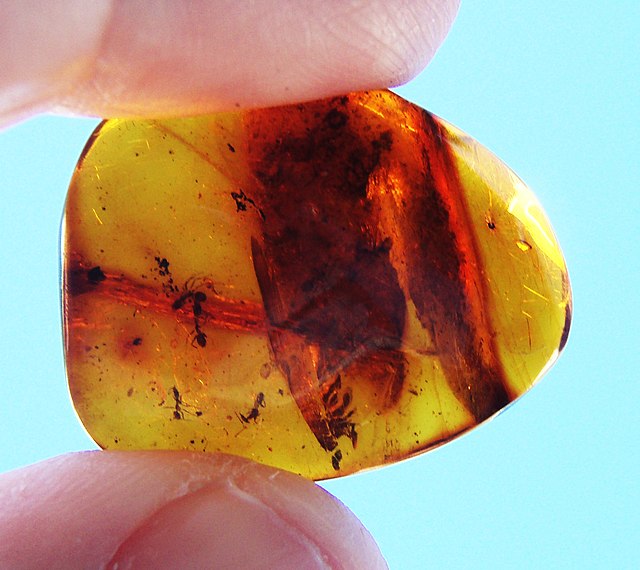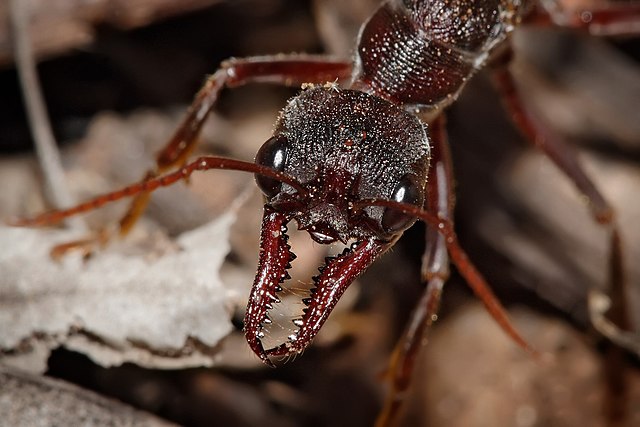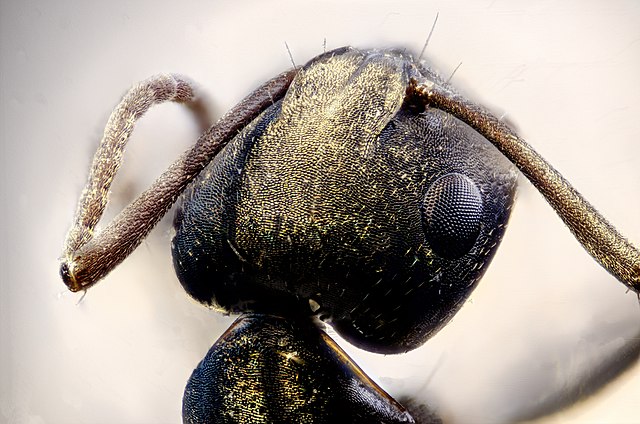Trophallaxis is the transfer of food or other fluids among members of a community through mouth-to-mouth (stomodeal) or anus-to-mouth (proctodeal) feeding. Along with nutrients, trophallaxis can involve the transfer of molecules such as pheromones, organisms such as symbionts, and information to serve as a form of communication. Trophallaxis is used by some birds, gray wolves, vampire bats, and is most highly developed in eusocial insects such as ants, wasps, bees, and termites.
Trophallaxis in Asian-Australian weaver ant O. smaragdina, Thailand
Trophallaxis in carpenter ants Camponotus sp.
Food sharing between parent and chick chinstrap penguins Pygoscelis antarctica.
Ants are eusocial insects of the family Formicidae and, along with the related wasps and bees, belong to the order Hymenoptera. Ants evolved from vespoid wasp ancestors in the Cretaceous period. More than 13,800 of an estimated total of 22,000 species have been classified. They are easily identified by their geniculate (elbowed) antennae and the distinctive node-like structure that forms their slender waists.
Ant
Ants fossilised in Baltic amber
Bull ant showing the powerful mandibles and the relatively large compound eyes that provide excellent vision
Ant head







